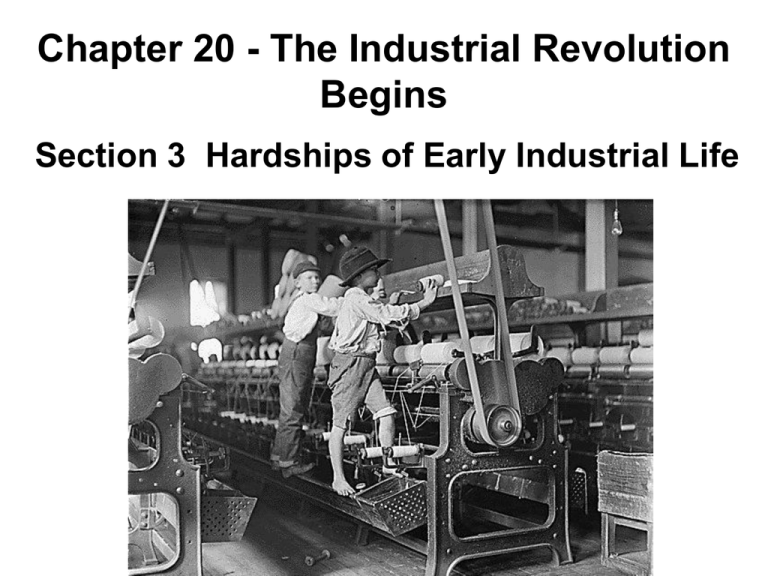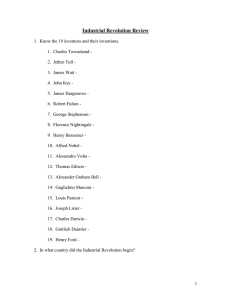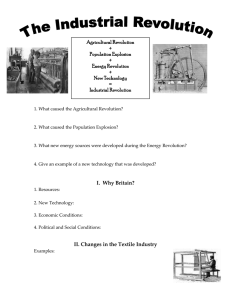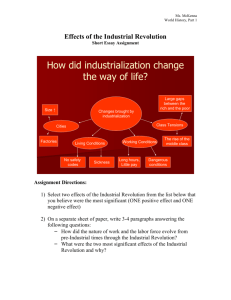Chapter 20 - The Industrial Revolution Begins
advertisement

Chapter 20 - The Industrial Revolution Begins Section 3 Hardships of Early Industrial Life Setting the Scene The Industrial Revolution brought great riches to most of the entrepreneurs who helped set it in motion. For the millions of workers who crowded into the new factories, however, the industrial age brought poverty and harsh living conditions. Working people could look forward only to lives marked by dangerous working conditions; unsafe, unsanitary, and overcrowded housing; and unrelenting poverty. I. The New Industrial City The Industrial Revolution brought rapid urbanization, the movement of people to cities I. The New Industrial City Changes in farming, soaring population, and an increasing demand for workers led to this migration Seed Drill Population Explotion I. The New Industrial City The poor workers struggled to survive in urban slums Slum Neighborhood in London London’s Poor II. The Factory System The heart of the industrial city was the factory, which imposed a harsh new way of life on workers A. Rigid Discipline Workers faced a rigid schedule - shifts lasted up to 16 hours and they were exposed to constant danger B. Women Workers Many employers hired women - they were easier to manage could be paid less than men C. Child Labor Factories and mines hired boys and girls as young as 5 years old, or used orphans as a source of labor Child "hurriers" working in mines C. Child Labor Some were killed or crippled and others were stunted in growth or had twisted limbs Cripples in the yard of children's home in London C. Child Labor In the 1830s and 1840s, Parliament began to pass laws to regulate child labor in mines and factories III. The Working Class A. Protests - Some skilled workers resisted the loss of their jobs by smashing machines and burning factories – the “Luddites” The Luddites 1811-1816 Today the word 'Luddite' is used to mock someone who dislikes new technology like computers... Machine-breakers or 'Luddites', 1812 A. Protests Protests met harsh repression, workers were forbidden to organize and strikes were outlawed 1839 Manchester protests B. Spread of Methodism John Wesley founded the Methodist Church and tried to rekindle hope among the working poor and work for social reform In 1729, Wesley went into residence at Oxford. There he joined the Holy Club, a group of students that included his brother Charles Wesley. The club members adhered strictly and methodically to religious practices, and were thus derisively called “Methodists” by their schoolmates. IV. The New Middle Class Those who benefited most from the Industrial Revolution were the entrepreneurs who set it in motion IV. The New Middle Class Middle-class families lived in fine homes, dressed and ate well, and gained influence in Parliament IV. The New Middle Class The middle class valued hard work and "getting ahead” IV. The New Middle Class They felt little sympathy for the poor, who they thought were responsible for their own misery V. Problems and Benefits Problems included low pay, dangerous working conditions, unemployment, and dismal living conditions V. Problems and Benefits Benefits included new laws to improve working conditions and labor unions won the right to bargain with employers





